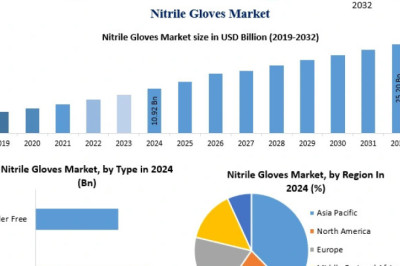views
Choosing the right printer ink cartridge is crucial for maintaining print quality and extending the life of your printer. With a wide variety of options available, it's important to understand the factors that influence your choice. In this guide, we'll take you through the essential considerations when selecting printer ink cartridges.
1. Printer Compatibility
Before you start shopping for ink cartridges, ensure they are compatible with your printer model. Check your printer's user manual or the manufacturer's website for a list of compatible cartridges. Using the wrong cartridge can damage your printer and produce subpar prints.
2. Ink Cartridge Types
a. Original Equipment Manufacturer (OEM): These are cartridges made by your printer's manufacturer. They are usually more expensive but offer the highest quality and compatibility assurance.
b. Remanufactured Cartridges: These are recycled OEM cartridges that have been cleaned, refilled, and tested. They are a more eco-friendly and cost-effective option.
c. Compatible or Generic Cartridges: These are third-party cartridges designed to work with specific printer models. They are typically the most budget-friendly option but may vary in quality.
3. Ink Cartridge Capacity
Consider the page yield of the ink cartridge. Page yield indicates how many pages you can print with a single cartridge. High-capacity cartridges may cost more initially but can save you money in the long run, as they require less frequent replacement.
4. Ink Type
a. Dye-Based Ink: Ideal for vibrant color printing and photographs. It is known for its sharp and bright output but may fade over time.
b. Pigment-Based Ink: Suitable for text and documents. Pigment ink is more resistant to fading and water damage, making it a better choice for archival prints.
5. Print Quality
The quality of your prints depends on the ink quality. OEM cartridges typically offer the best print quality, but high-quality remanufactured or compatible cartridges can also provide excellent results. Read user reviews and conduct thorough research to gauge print quality.
6. Cost Considerations
a. Initial Cost: OEM cartridges are more expensive upfront, while compatible cartridges are often cheaper. Consider your budget when making a choice.
b. Long-Term Costs: Calculate the cost per page over time, factoring in the cartridge's page yield. Sometimes, investing in high-capacity cartridges can be more cost-effective.
7. Warranty and Guarantee
Check for any warranties or guarantees that come with the ink cartridges. OEM cartridges usually have a manufacturer's warranty, while third-party cartridges may offer their own guarantees. Understanding the warranty terms can provide peace of mind.
8. Environmental Impact
If sustainability is a concern, consider remanufactured or eco-friendly ink cartridges. These options help reduce e-waste and minimize the environmental footprint.
9. Storage and Shelf Life
Ink cartridges have a limited shelf life. Check the expiration date and storage recommendations to ensure your cartridges perform optimally. Proper storage can prevent ink from drying out.
10. User Reviews and Recommendations
Before making a final decision, read user reviews and seek recommendations from trusted sources or fellow printer users. Real-world experiences can help you make an informed choice.
Conclusion
Choosing the right printer ink cartridges involves considering factors like compatibility, ink type, cost, and environmental impact. By carefully evaluating these aspects, you can ensure optimal print quality, longevity of your printer, and cost-effectiveness in the long run. Take your time to research and make an informed decision that suits your printing needs and budget.











